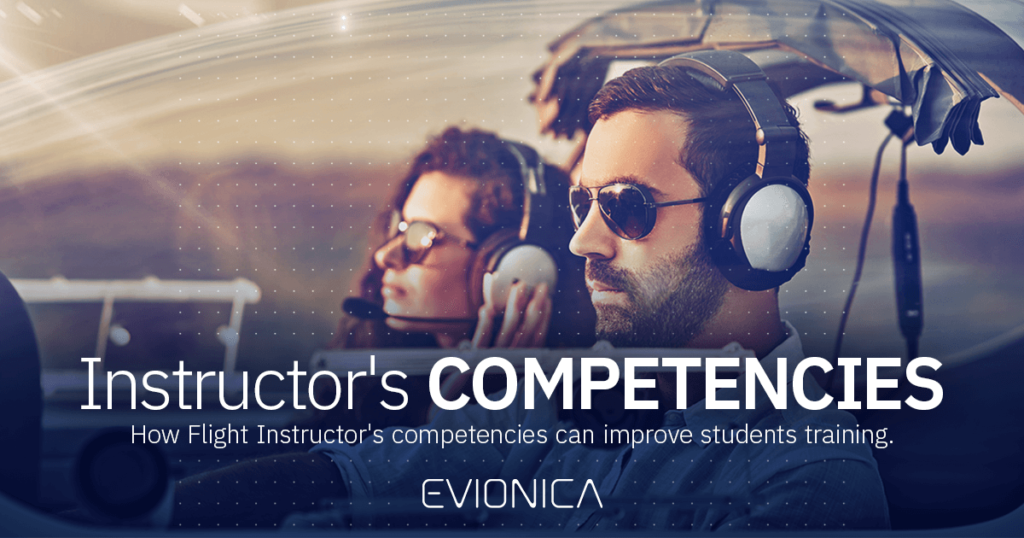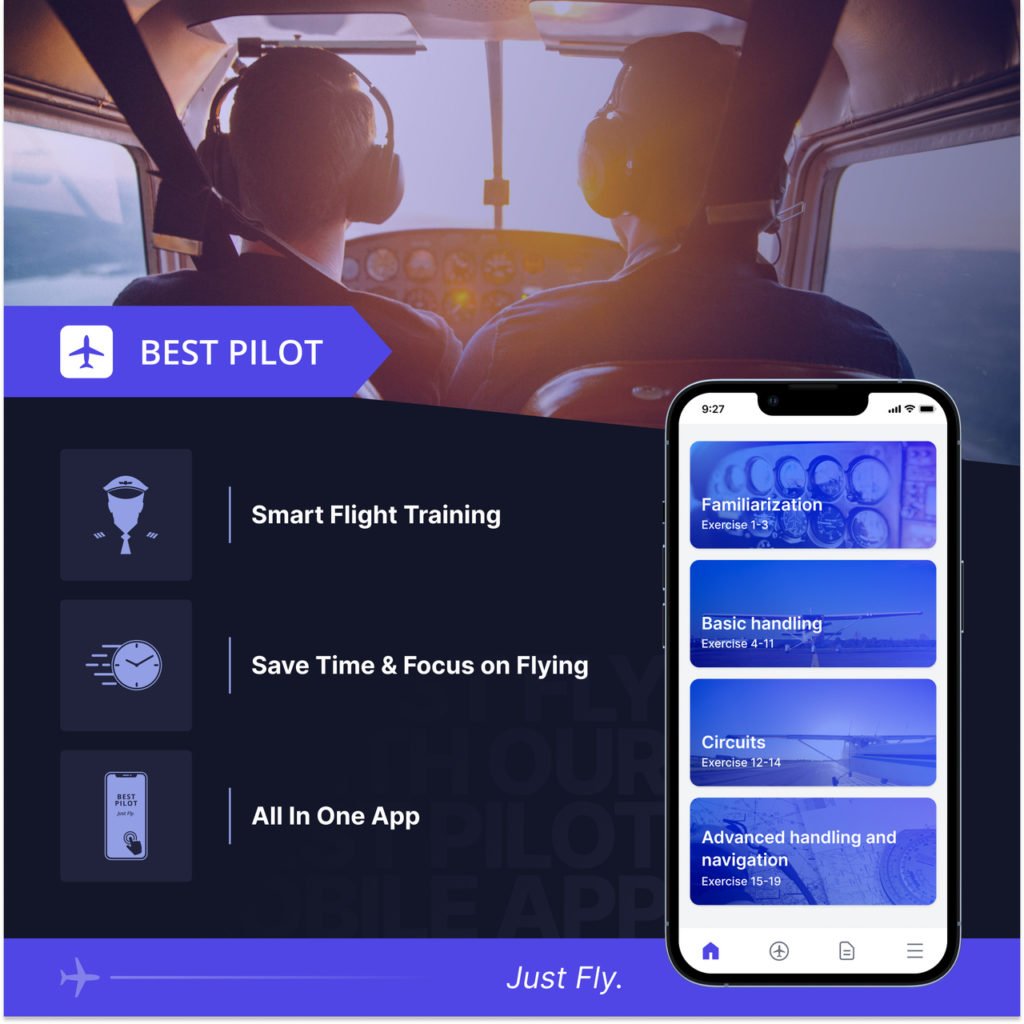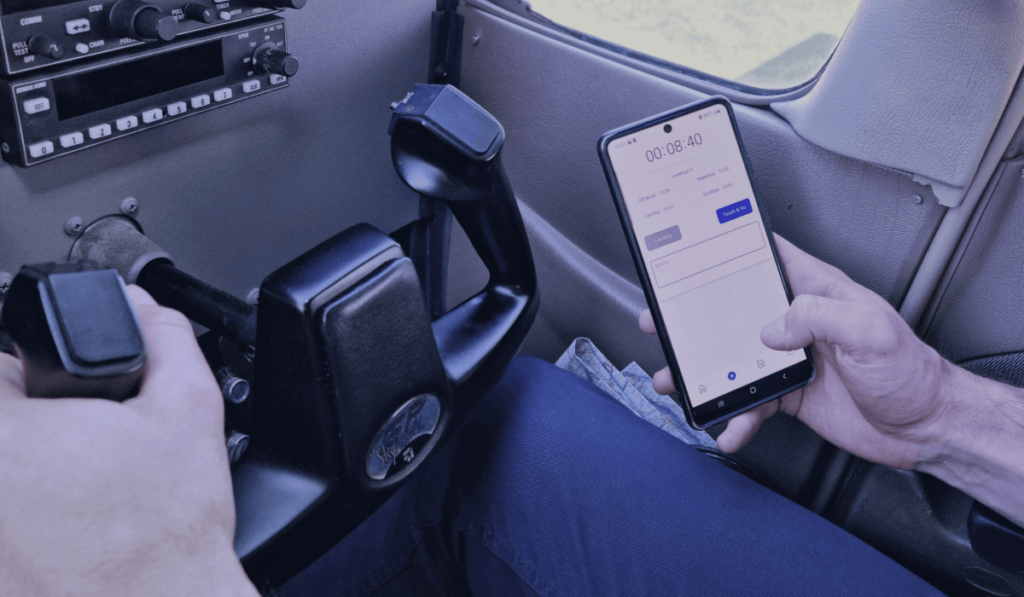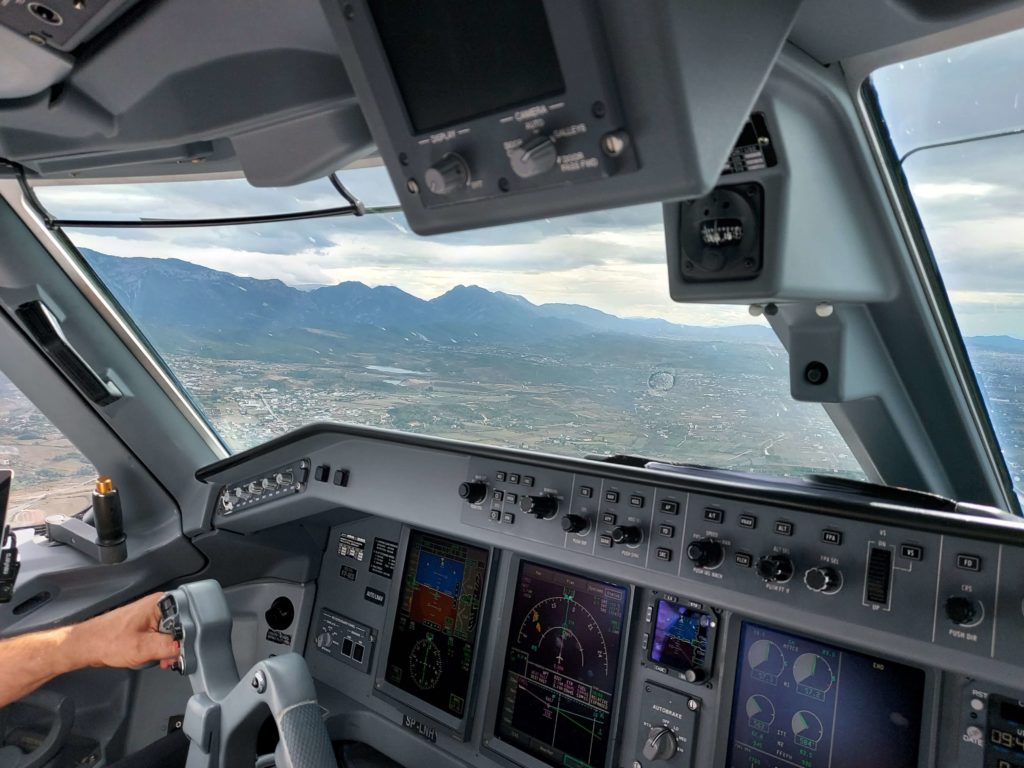How Flight Instructor’s competencies can improve students training
Acquiring knowledge and skills is an inherent aspect of human nature. From the very beginning of our existence, man has endeavored to develop and broaden his horizons. In the initial stages, the acquisition of skills came through trials and experiments.

Nowadays, some professions require specialists who will guide and indicate the right direction for training. Such professions include pilots, not only those working for airlines, but also, private pilots during their training when they gain aviation experience.
How to prepare well for the first flight training?
The role of the flight instructor in aviation training is crucial for future pilots. The instructor’s knowledge, expertise, and experience shape students training and pilot skills. To prepare well pilot students for practical training, Evionica aviation experts designed high-quality e-learning courses for PPL(A), CPL(A), and ATPL(A) students. This new approach to pilot training helps students master the knowledge and gain experience before their first flight training.
Moreover, our new BEST PILOT APP dedicated to Flight Instructors and Students provides the highest quality of practical training. This mobile app ensures pre-briefings, in-flight notes, and the collection of all information in one place with the possibility of validating students’ documentation.

Instructor’s role during pilot training
Human Factor in aviation is mostly considered in training and in the event of potential complications. It is a reason for about 80% of all aviation accidents, 5% of such accidents are due to bad weather conditions, and 15% are because of mechanical failures of the equipment. It is therefore easy to see that proper training of aviation personnel is vital in making a significant contribution to reducing incidents.
In crisis situations where stress is an added factor, having properly trained staff is effective in ensuring that the pilot makes the right decisions. The instructor’s role is to support the student, take care of the good quality of the training, and help with obtaining appropriate qualifications to perform independent flights as a pilot in command.
What influences good quality aviation training?
Regardless of the type of organization and training program used, the most important aspect in ensuring that assumed training goals are met is the proper selection and implementation of specific training methods during theoretical and practical training. The training should be conducted by the instructor in a way that is understandable to the student, does not raise any doubts, and above all, does not leave any questions unanswered. The human factor combined with the stress of flight, which students encounter at the beginning of their practical training, causes a significant reduction in reaction time, or the feeling of lacking theoretical knowledge. In such instances, the instructor will need both patience and an appropriate approach to their student, in order to pass on knowledge without causing further stress.

Importance of preflight briefings
An extremely helpful tool for the instructor to check how well the student is prepared before the flight is the organization of preflight briefings. During these briefings, the instructor will present the lesson plan, talk about the tasks, and check the theoretical knowledge that is required of their student for the flight.
During the theoretical training, the instructor conducting the classes should ensure that there is continuity in the modular training. In practice, this means they should carefully emphasize the transition to other training issues. It is recommended to refer to topics covered in previous lessons during discussions with group members, in order to consolidate the knowledge gained and indicate how one thing is connected to another. E.g., when looking at “stalling the aircraft”, it is worth reminding the students about the aerodynamics of the wing, and discuss with them how the airflow changes on the aerofoil when the critical angle of attack is exceeded.”
Flight training with constructive feedback
At the end of the lectures or after the flight, the instructor should provide a summary in which the most important conclusions, definitions, and pain points are discussed with the student. We should not leave the student with doubts, nor with any feelings that they have not fully understood some remarks. It is important that the feedback given to the student is constructive, not intrusive.
Clearly defined tasks to be performed, the expected knowledge acquisition for the next meeting, and expectations regarding the preparation of a flight plan, maps, weather forecasts, or NOTAMs, provide a clear indication to the student on areas for further development and how to make progress in training.

Flight Instructor’s competencies
The Flight Instructor’s role is part psychologist, part teacher, and also, guard. He or she needs to take care of flight safety. The role of the psychologist begins when stress is apparent in the student – first flights tend to be extremely stressful. Also, when the student doubts their skills or, on the contrary, believes that they know everything – the role of the instructor is to properly prepare the student for solo flights. Just as flight conditions vary, so each student is also different. This is why the instructor’s approach to students is an extremely important feature. The instructor cannot afford to be unassertive or overly strict.
All these approaches should be balanced. The most important thing is to share the sheer love of flying while admiring and praising the progress of your students. Such students may then share their passion with other aviation enthusiasts in the future.
Check out CBT courses dedicated to future pilots:
